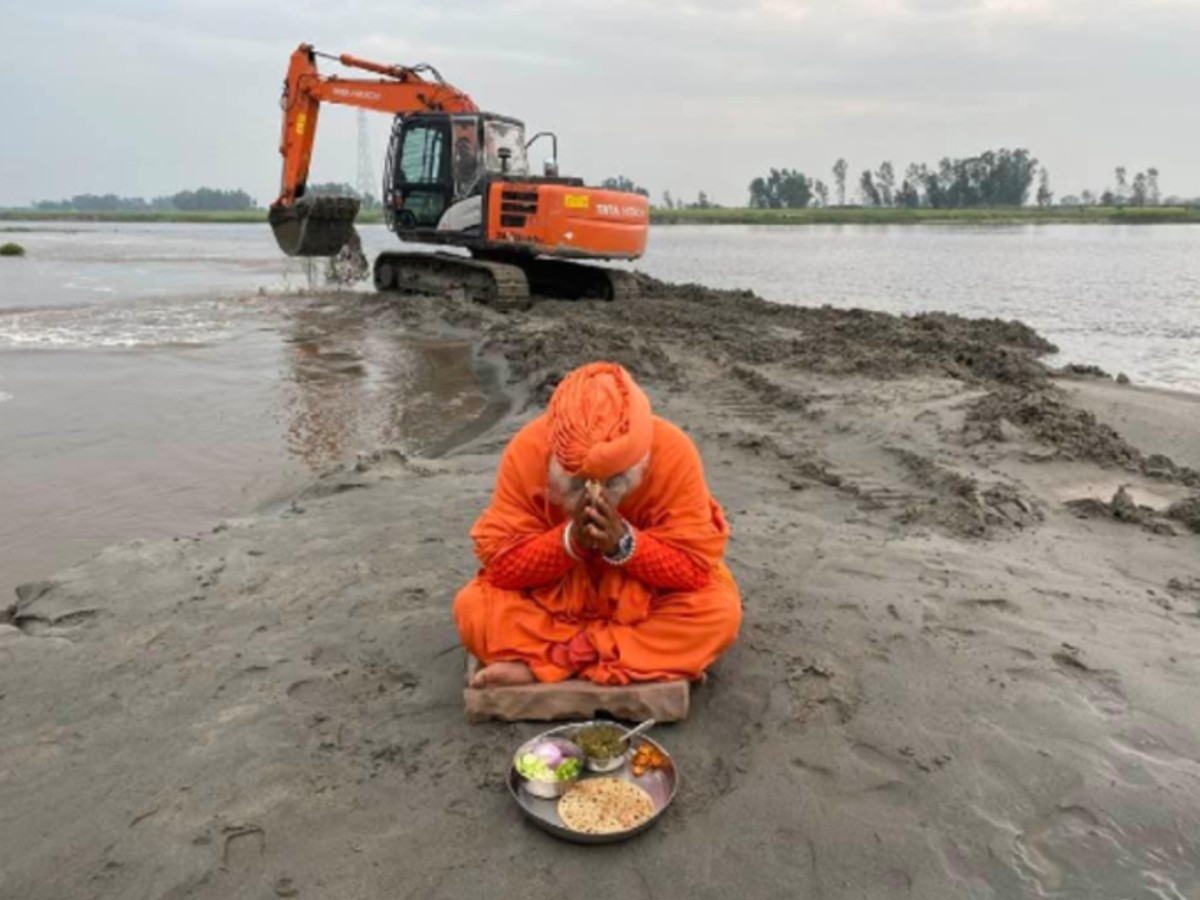Satluj River De-silting Mission Fuelled By Donations
First time in India, Baba Balbir Singh Seechewal led a massive operation that ran on donations
M4PNews|Chandigarh
There is a huge difference in those who just curse the government and those who take up the onus upon themselves without asking a single penny from the government! This is Baba Balbir Singh Seechewal.
On August 18, 2019, in Jania Chahal village a 500-ft bank was destructed because Bhakra Dam overflowed and hence lakhs of cusecs of water were released in Satluj river, which led to the flood. On August 19, Gidderpindi Banks too collapsed due to the flood in Satluj. This caused massive damage to 40 villages and 18,000 acres of land in 2019. That made a man take a lead on this issue and then, he created history. 12 way-outs have been desilted and 8 are yet to open. Initially, only 4 way-outs down the railway-bridge were open, due to which bundhs go collapsed in previous flood of 2019.
This is pertinent to mention here that Punjab Government officials estimated Crores of Rupees expenditure to rebuilt the repair bundhs of Satluj, But Sant Seechewal did this all with the help of donation that too before the monsoon of 2020.
This was a first-ever in India when a massive de-silting operation started on August 22, 2019, under the railway bridge on Satluj River near Giddarpindi village of Shahkot sub-division of Jalandhar district. The Mission, which is now completed, has already incurred an expenditure of Rs 1.5 crore on diesel with over 80 tractors, six big excavators and three earth moving machines having worked daily (day and night) for several hours.
What was so unique about the mission was that all the money came from NRIs and local donors, while farmers of the area paid the rent for tractor-trailers.
“We had desilted 15-18 feet deep. In around a month, we have cleared one-and-a-half span of the bridge. Total 18 spans had also been de-silted. We had completed our mission of de-silting before the monsoon of 2020,” said environmentalist Baba Balbir Singh Seechewal, who has been leading the massive volunteer effort and marked his place in chapters of history.
The work required hydraulic lift trailers that were used for commercial purposes like transporting sand or soil. “We had provided diesel to all the machines and vehicles, while farmers were paying daily rent of the special trolleys working with hydraulic lifts. For every such special tractor-trolley daily rent is Rs 1,400. And 80 such trolleys were on the daily job, while around half-a-dozen tractors were also on the job, apart from six big excavating machines, which had also been hired on rent,” he said. It is the first example in India and the state when desilting of a river at such a scale was being carried out with volunteer effort.
Silt under and around the bridge was a major cause of floods in the area around six months back. The sand and earth being removed from the river bed were being used to strengthen and widen the earthen embankment on both sides of the river.
According to villagers, couple of decades back they could even pass with loaded carts from under the bridge, but due to regular silting, the gap between the river bed and the bridge reduced considerably. Under around 18 spans of the bridge, height of passages for water was left just three feet. It was reducing the flow of water during rainy season, which further lead to increase in pressure on the bundhs along the river. The reduced space would also get blocked by bushes flowing with the rain water, further cutting water flow.
Right from the days of floods, Baba Seechewal had been working in the area – first for taking relief material to the flood hit areas, then to raise bundh at the breach site, desilting the fields where extra sand got deposited during floods and then to strengthen the bundhs.

